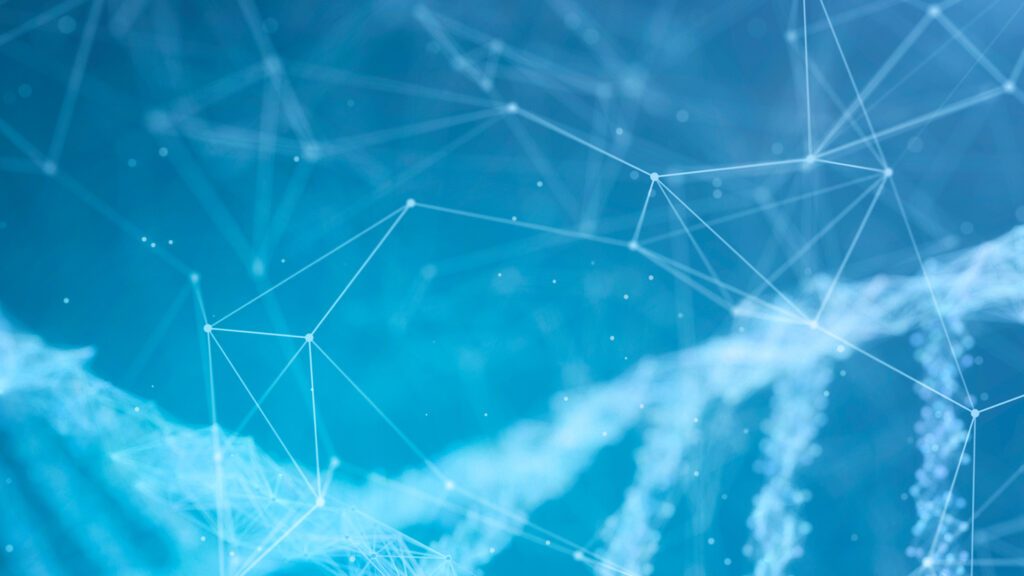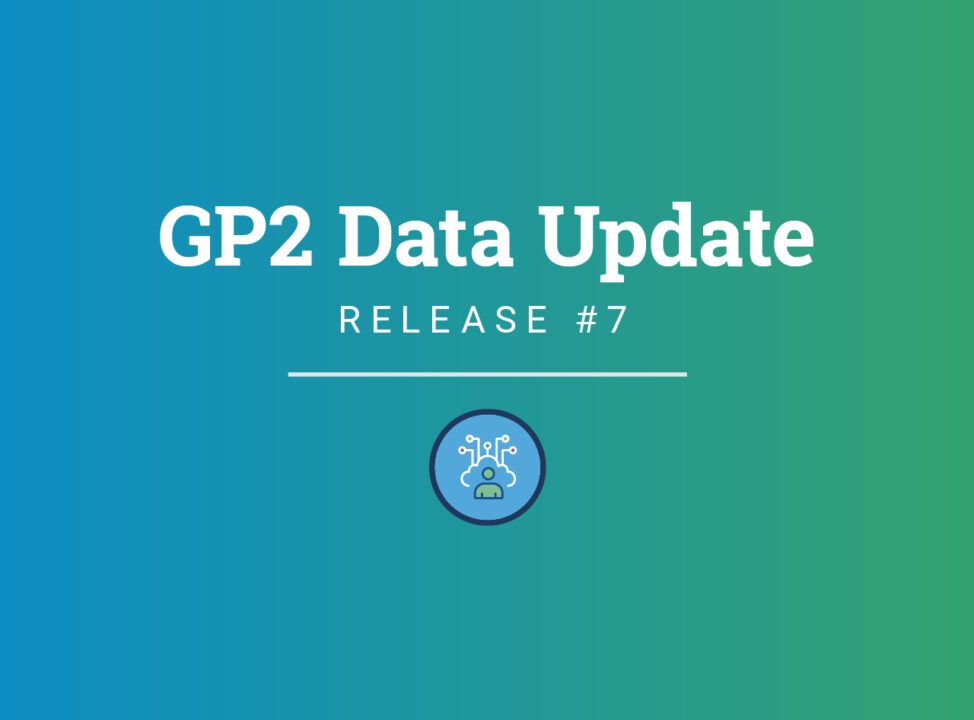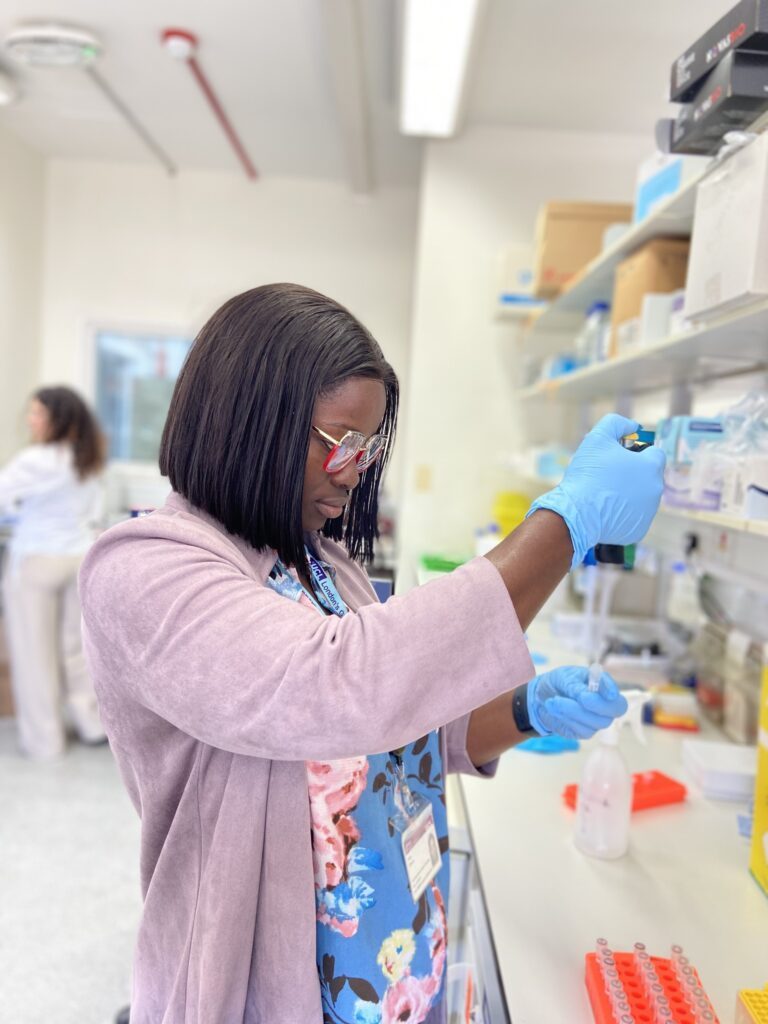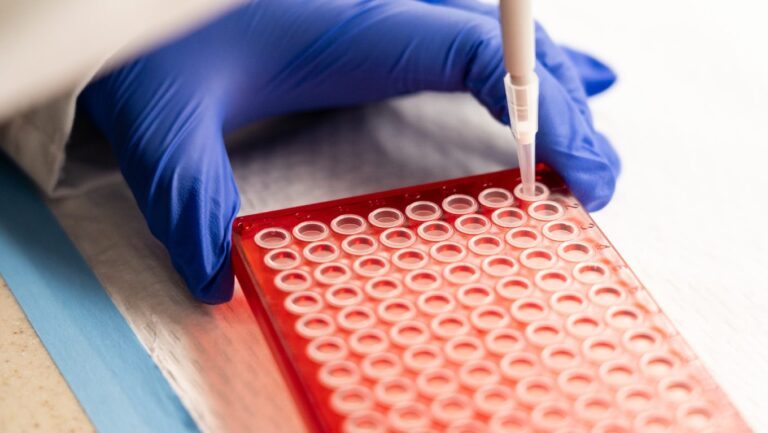Overview
In April 2024, GP2 announced the seventh data release on the Terra and the Verily® Workbench platforms in collaboration with AMP® PD. This release includes >9,000 additional genotyped participants.
- The genotype array data, including locally-restricted samples, now consists of a total of 54,180 genotyped participants (28,729 PD cases, 15,834 Controls, and 9,617 ‘Other’ phenotypes),
- When removing the locally-restricted samples, these now consist of 40,740 (20,507 PD cases, 11,841 Controls, and 8,392 ‘Other’ phenotypes)
- 17,496 total individuals who have deep clinical phenotyping information also have matching genetic information
What’s New In This Release?
- Additional genotyped and imputed samples
- Additional clinical data for 4,911 individuals
Locality-restricted GDPR samples via the Verily Viewpoint Workbench
We are continuing to pilot granting access to locally-restricted samples, otherwise known as samples governed by the General Data Protection Regulation (GDPR) policy, through our collaboration with the Verily Viewpoint Workbench.
At this time, as GP2 continues to roll out data sharing solutions for GDPR protected data, release 7 data with regional restrictions will be available to only GP2 consortium members and partners. As testing and implementation continue in early 2024, this solution will be available to the broader research community. All release 7 samples can be found on Workbench, meanwhile all release 7 samples not governed by GDPR requirements can be found on the community workbench on Terra (like all previous releases). To gain access to the full release on VWB you must:
- Have approved GP2 Tier 2 access
- Fill out the GDPR-governed sample request form
- Be a GP2 consortium member (contributing cohort, GP2 partner, or project analyses team member)
Clinical Data
This release contains deep clinical phenotyping data for an additional 4,911 individuals in this release. This information consists of
- Age at diagnosis and onset
- Primary, current, and latest diagnoses
- Cognitive exams such as the Mini-Mental State Examination (MMSE) and the Montreal Cognitive Assessment (MoCA)
- Movement Disorder Society-Sponsored Revision of the Unified Parkinson’s Disease Rating Scale (MDS-UPDRS)
- Detailed “other” phenotypes, such as Lewy body Dementia (LBD)
In this release, each of the 17,496 individuals who have clinical information also have matching genetic information.
Individual-Level Data
We now capture the data from a total of 87 cohorts, 14 of which are new to this release. Please refer to the GP2 Cohort Dashboard for more information on the cohorts that have been shared.
Genetically-determined ancestry of array genotyped GP2 participants is broken into 11 ancestry groups; the table below details the genetically-determined ancestry of genotyped participants in this release that have passed quality control and been imputed. These numbers include samples from previous releases that have been reclustered using the new cluster file and gone through quality control along with the newly genotyped and shared samples unique to this current release.
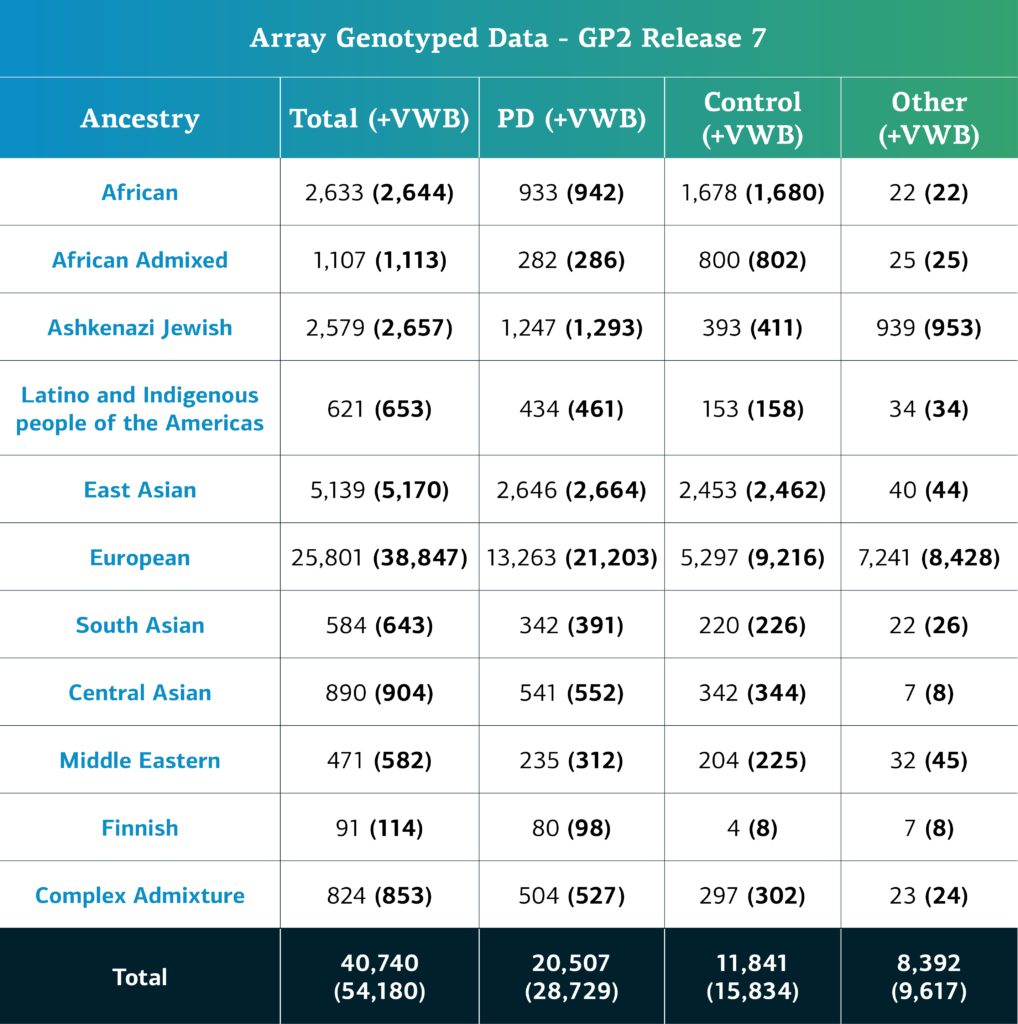
Whole Genome Sequences called by DeepVariant-GLnexus
Additional GP2 sequencing data is estimated for release in Q3 2024.
Future data releases will continue to grow the diversity of participants available. You can check out our cohort dashboard to see our progress. For users with tier 2 access already, you can explore the data further on our cohort browser, expanded on in a previous blog post.
As always, please refer to the README that accompanies each GP2 release for further details regarding pipelines, data, and analyses!
